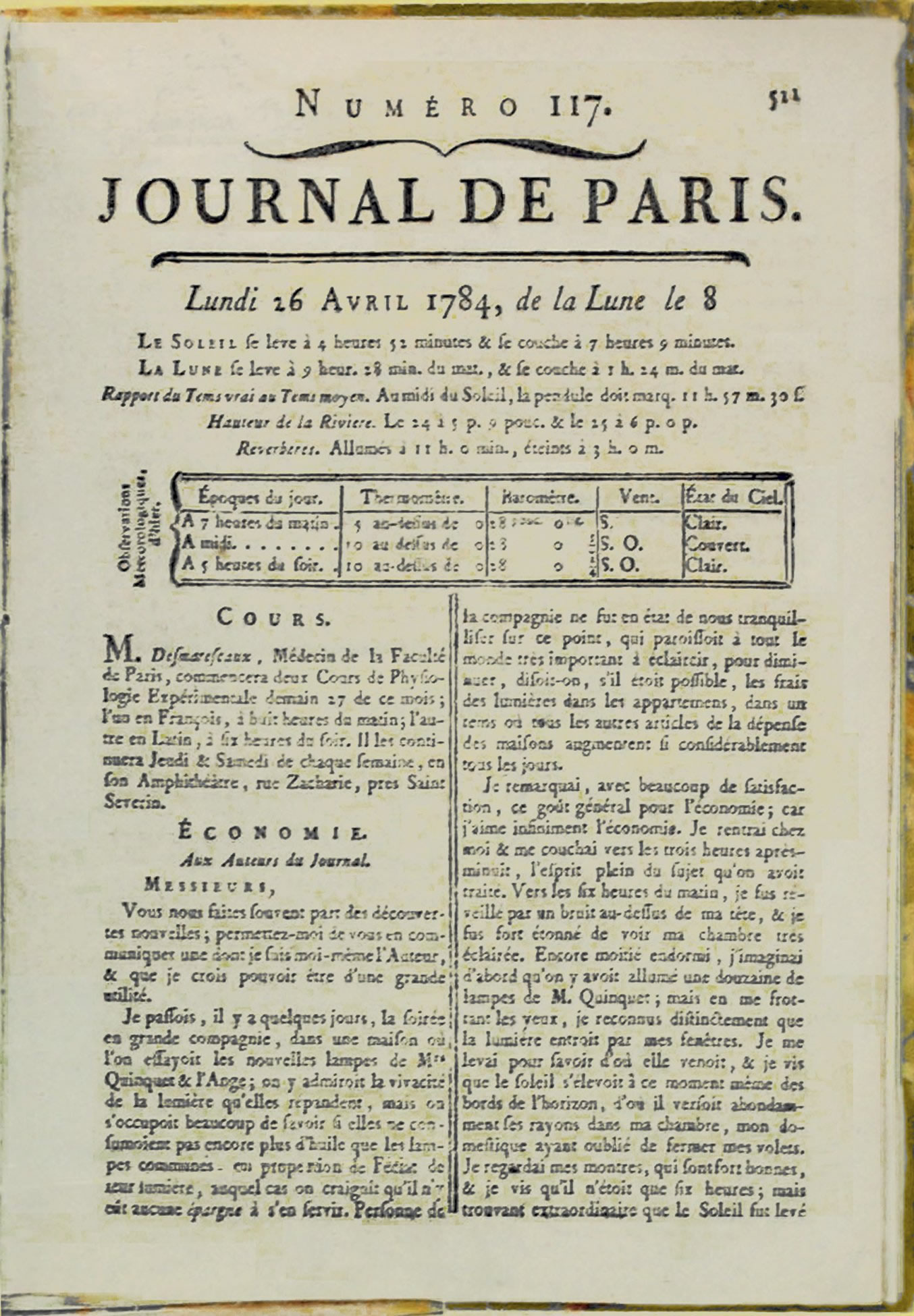
Spring ahead, fall back.” Where did the idea of changing our clocks originate? The very earliest known reference to daylight saving time can be traced back to the Pennsylvanian legend, Benjamin Franklin, in an essay he wrote for the Journal de Paris in 1784. At this time Franklin served as the American minister to France. “An accidental sudden noise waked me about six in the morning,” he wrote, “when I was surprised to find my room filled with light. I imagined at first that a number of lamps had been brought into the room; but rubbing my eyes I perceived the light came in at the windows.” His attendant had forgotten to close the shutters the night before, and Franklin was astonished to see sunlight streaming into his room. To his dismay, it was just six o’clock in the morning. This discovery led to serious and important reflections which Franklin decided to investigate.
In 1784, he conducted a study for six months between March 20 and September 20. On average, Franklin estimated Parisians would awaken at noon and sleep six to seven hours after sunrise. Candlelight was used for these six additional hours in the evening. The results of his study were shocking. He computed ninety-six million livres tournois that could be saved a year by using the sunshine in the morning instead of candles at night. This is equivalent to about $200 million today. Franklin added, “You may observe that I have calculated upon only one half of the year, and much may be saved in the other, though the days are shorter.” His article went on to propose ideas such as a taxing shutters that kept out the sunlight. Although partially conceived in humor, this was the beginning of a great discovery.
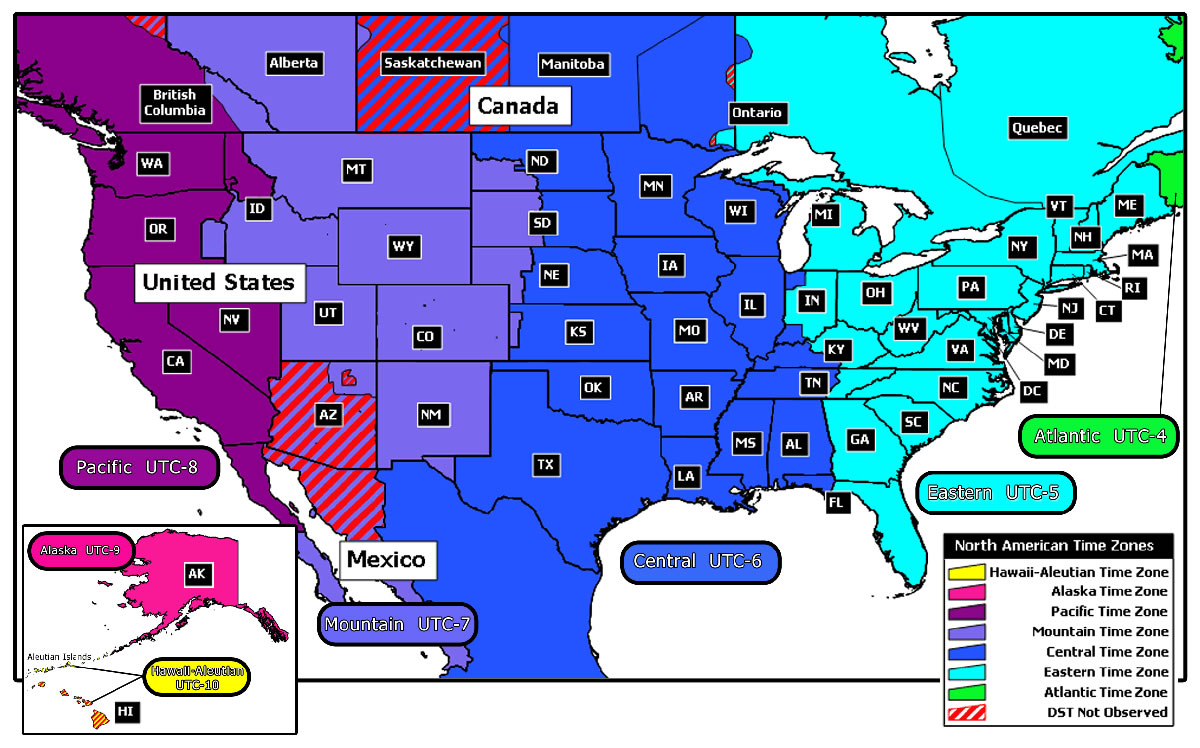
Today, the United States Department of Transportation is responsible for maintaining a standardized system of time throughout the United States. Contrary to popular belief, no federal laws require the observance of daylight saving time. According to the Uniform Time Act of 1966, Congress ordered the Department to “foster and promote widespread and uniform adoption and observance of the same standard of time within and throughout each such standard time zone.” Consistency across time zones had not always been the case. Perplexity and chaos run through the history of adjusting our clocks. During the 19th century there were numerous time zones. According to Bill Mosley, a public affairs officer at the U.S. Department of Transportation, in the early 19th century localities set their own time. People used local solar time kept by most mechanical clocks.
As railways and telecommunications improved, however, timekeeping became more baffling. Each railroad would use its own standard time, usually based on the local time of its headquarters, and their schedules were published in accord with their own time. Some railroad junctions even had a separate clock for each railroad. The main station in Pittsburgh, for example, kept six different clocks. In 1883, there were twenty-seven different local times in Illinois alone. Railroad users were inconvenienced and confused by the lack of uniformity. The difficulty came to an end in 1883 when U.S. and Canadian railroads adopted four standardized time zones which replaced the multiplicity of local times. The U.S. Commissioner of Railroads, William H. Armstrong, gave the following account in his report to the Secretary of Interior on November 18, 1883:
Under the present system each railway is operated independently on the local time of some principal point or points on some said road, but this plan was found to be highly objectionable, owing to the fact that some fifty standards, intersecting and interlacing each other, were in use throughout the country. By the plan which has been adopted this number will be reduced to four, the difference in time being one hour between each, viz, the 75th, 90th, 105th, and 120th degrees of longitude west from Greenwich. The adoption of these standards will not cause a difference of more than thirty minutes from the local time at any point which is now used as a standard.
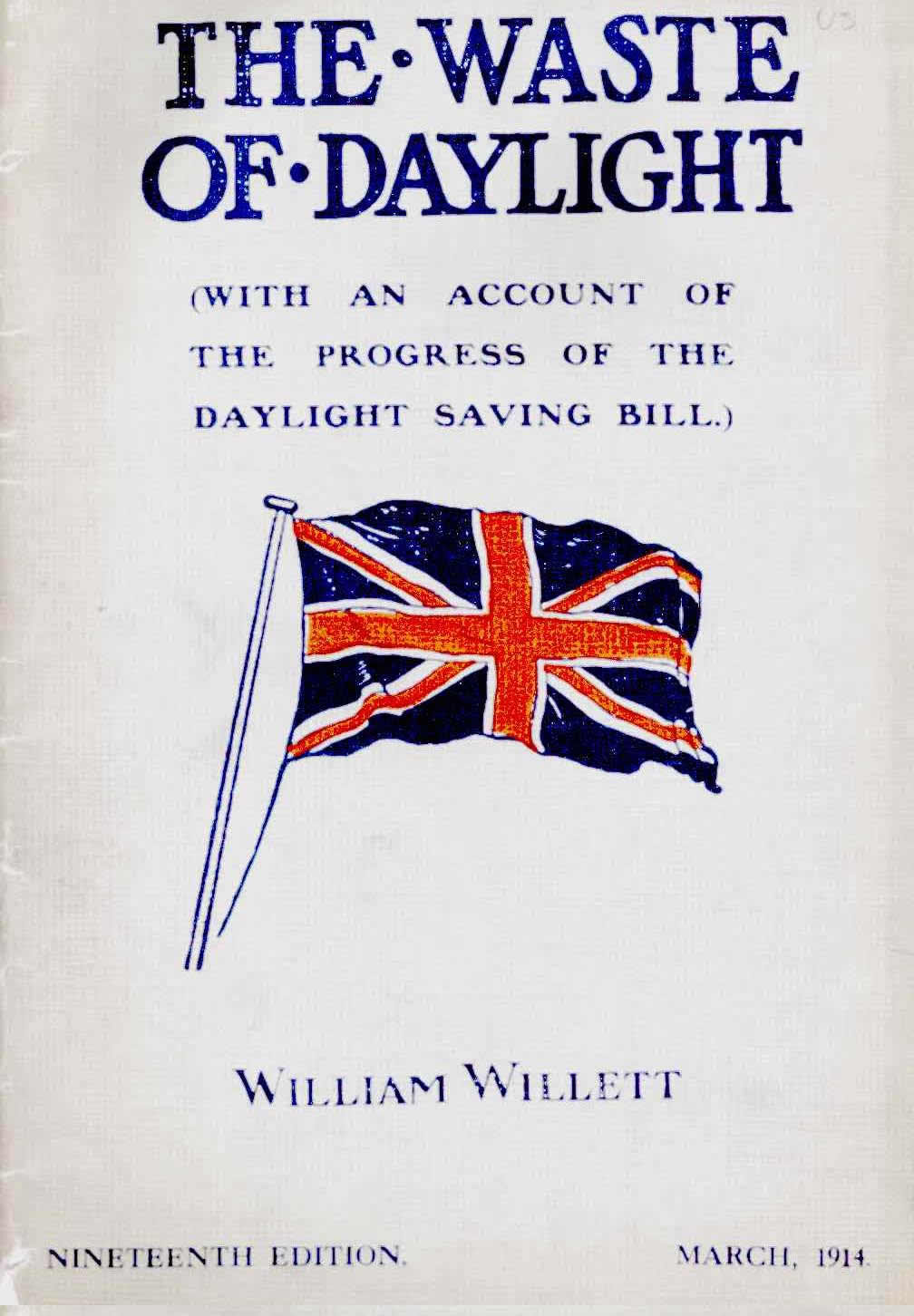
Since their original introduction, time zone boundaries have changed significantly and preserving daylight became an issue at hand. It took three people to institutionalize daylight saving time (DST) in the United States. One was a New York City official; another was a Boston retailer. The leading influence, however, came from Pittsburgh. Robert Garland, industrialist and Pittsburgh city councilman during the First World War, is known as the “father” of daylight saving time. Garland was influenced by the ideas an English builder, William Willett, to whom DST is commonly credited. Willett was a determined promoter of daylight saving. Independently in 1907, he published a pamphlet called The Waste of Daylight proposing that clocks be advanced by 80 minutes in the summer. He suggested clocks be advanced by 20 minutes at 2:00 a.m. on consecutive Sundays in April and brought back the same amount on Sundays in September. Willett vigorously campaigned for his idea, but he only succeeded to gain the support of one member of the Parliament, Robert Pearce, who unsuccessfully attempted to pass it into law. Willett’s plan provided data showing Britain’s energy savings of fuel and kilowatt-watt hours. After examining these results, Garland became convinced of the benefits of daylight saving time and led the DST campaign in America.
DST began to catch on and thousands of advocates supported the movement. The leading drive to the acceptance of DST came with the start of World War I. The National Daylight Saving Association, led by Garland, testified to Congress in favor of the bill. One testimony focused on the war effort; with an extra hour of home gardening, the food production would increase. A study of cities situated near railroads’ time zone boundaries was presented by a Harvard University astronomy professor, Robert Wilson. He showed that a majority of those cities had chosen to be a part of the easterly of the two time zones, gaining an hour and saving daylight for years. Others concentrated on the fuel conservation and health improvement and produced a long list of supporters. A business point of view was provided by Sidney Colgate, president of Colgate & Company of Jersey City, New Jersey. His company voluntarily shifted its summer hours one hour earlier. The results Colgate found were that the company employees were more energetic and happier.
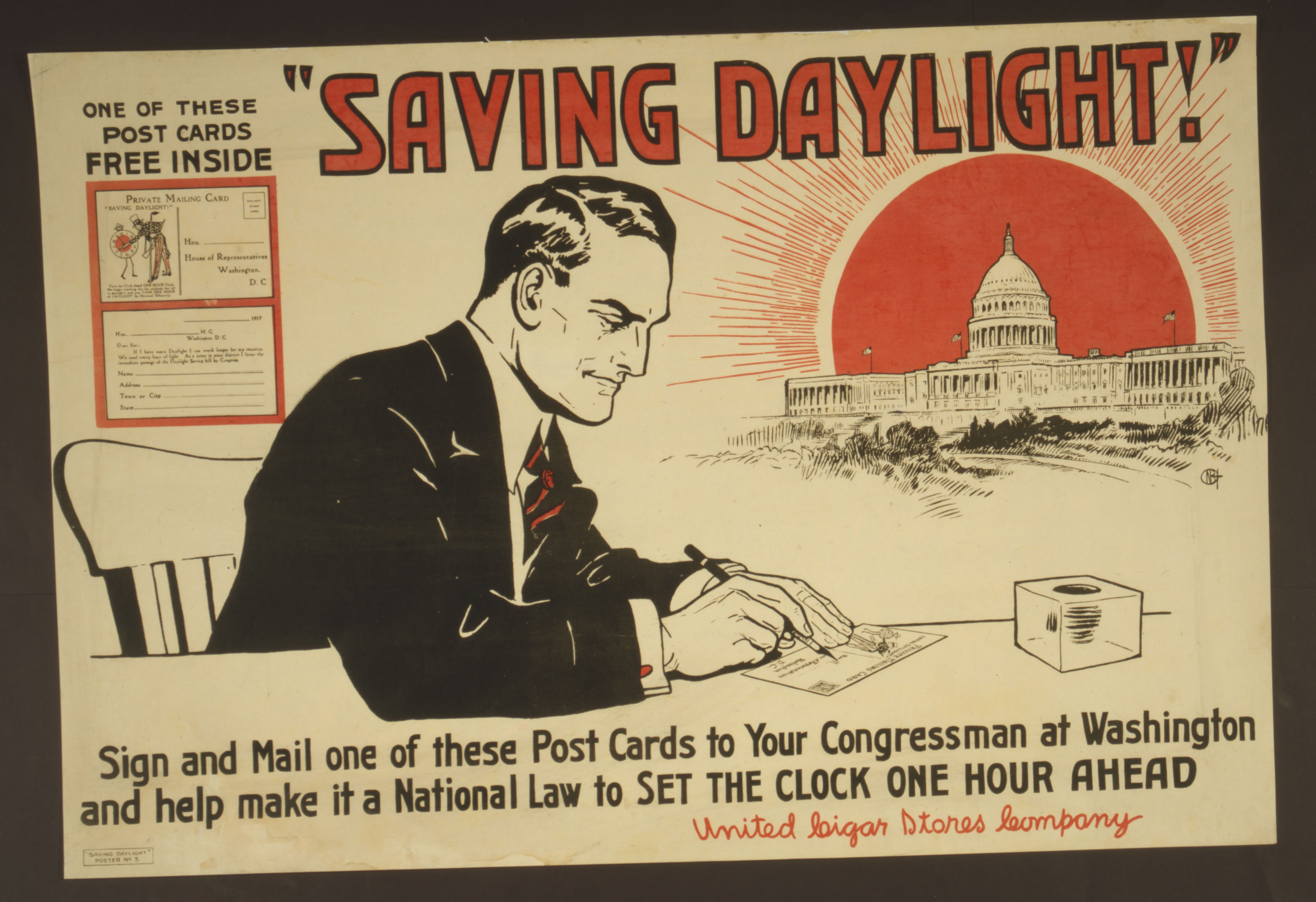
Not everyone was pro-DST. Speaking out against the bill, D.C. Stewart of the American Railway Association presented a dangerous situation with the time change. Stewart was concerned about the risk of accidents on single-track railroads. There were 1,698,818 clocks and watches that would need to be changed on all the railroads. Stewart believed the risk of misinterpretations and mistakes on changing clocks was too high. Senator Frank Kellogg of Minnesota provided a solution that would minimize potential problems for railroads. Kellogg asked Stewart at what point in the day the fewest number of trains were running. Stewart told him two o’clock in the morning, and this became the designated transition time in the bill. This confirmed the transition time in all American DST laws since. On March 19, 1918, President Woodrow Wilson signed the bill into law. It was called the Standard Time Act of 1918; the part providing for DST was called the Daylight Saving Time Act.
After World War I ended, daylight saving time was repealed in 1919 with a Congressional override of President Wilson’s veto. The law proved to be unpopular, and DST became a local option. A few states, such as Massachusetts and Rhode Island, and a few cities, such as New York, Philadelphia, and Chicago, continued to recognize it.
Throughout the years, there have been good and bad outcomes since the establishment of daylight saving time. According to David Prerau, expert on daylight saving time and author of Seize the Daylight, “The most interesting time of chaos due to daylight saving time was in the 1950s and 1960s.” During this time period, there were no federal or national laws regulating daylight saving time. Individual cities decided when their daylight saving time would start and when it would end. Basically each town had its own rules. “There was a bus ride you could take on Route 2 from Moundsville, W.Va., to Steubenville, Ohio. And the bus ride was only 35 miles,” Prerau says. “But because some towns along the way had daylight saving time and some didn’t, if you wanted to keep your watch correct during that 35-mile ride, you’d have to change your watch seven times.” A solution was finally presented in 1966. The U.S. Congress established the American law known as the Uniform Time Act of 1966. The law originally required the states that observed DST to begin in at 2:00 a.m. local time on the last Sunday in April and end it at 2:00 a.m. local time on the last Sunday in October. Still in effect today, the law does not require that anyone observe daylight saving time, it simply states that if we are going to observe DST, it must be done uniformly.
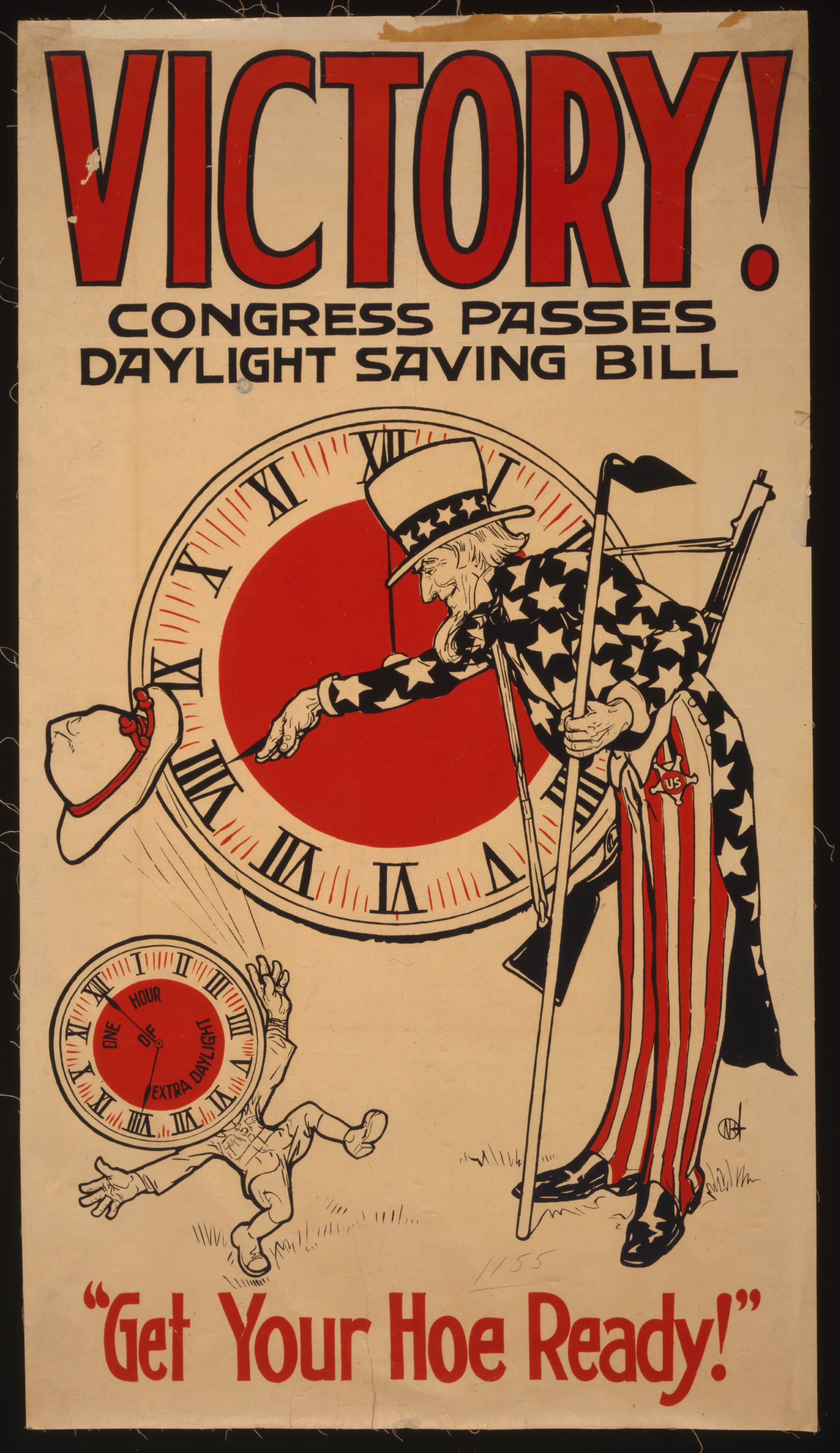
Recently, an extension was added to daylight saving time, prolonging the months in which DST is observed. David Prerau was a consultant to Congress on adding about a month to the previous schedule. “Most people think the effects of the extension are good.” Prerau says, “There are always those who disagree, but the purpose is to try to make the most people happy.” Congress’ general idea was to have as much light as possible and to avoid the darkest months of winter. The new law was passed in 2005 and took effect in 2007. Specifically, the extension established eight months of daylight saving time and four months of standard time. Three or four weeks were added to the spring; the main reason was to balance the beginning and end. In addition, one week was added to the fall. One main point when considering this was the issue of Halloween night. Under the old period, daylight saving time was never recognized on Halloween evening. According to the Centers for Disease Control and Prevention, the number of pedestrian accidents is four times higher on Halloween evening than any other evening of the year among pedestrians aged 5 to 14 years old. The new system provides for daylight saving time to be in effect on Halloween, which allows for one extra hour of sunlight. According to Prerau, there is no data yet to confirm a reduction in accidents on Halloween night, but Congress believes the new system is a step in the right direction.
There are believed to be many benefits to the extension of daylight saving time. First, it saves electrical energy. Mosley said research has shown that more available daylight increases energy savings. Energy use and the demand for electricity are directly related to when we go to bed and when we get up in the morning. On average, 25 percent of all electricity use in homes is used for lighting and small appliances with a good percentage consumed in the evening. Moving the clocks ahead one hour cuts this energy use consumed each day. In the 1970’s, the U.S. Department of Transportation did a series of studies that showed the entire country’s electricity usage is cut one percent each day with DST. This corresponds to national savings of forty to fifty megawatt hours per day.
Another benefit from DST is a reduction in traffic accidents and fatalities. Driving after dark is much more dangerous than driving in the daylight. Daylight saving time makes evenings lighter and mornings darker. Evenings see almost twice as many traffic accidents as mornings, decreasing the amount of overall daily accidents. In 1975, a two-month study was done by the Department of Transportation for March and April. The study found a 0.7 percent decrease in fatal motor vehicle accidents compared to standard time. Although a small decrease, about fifty lives were saved and two thousand injuries avoided.
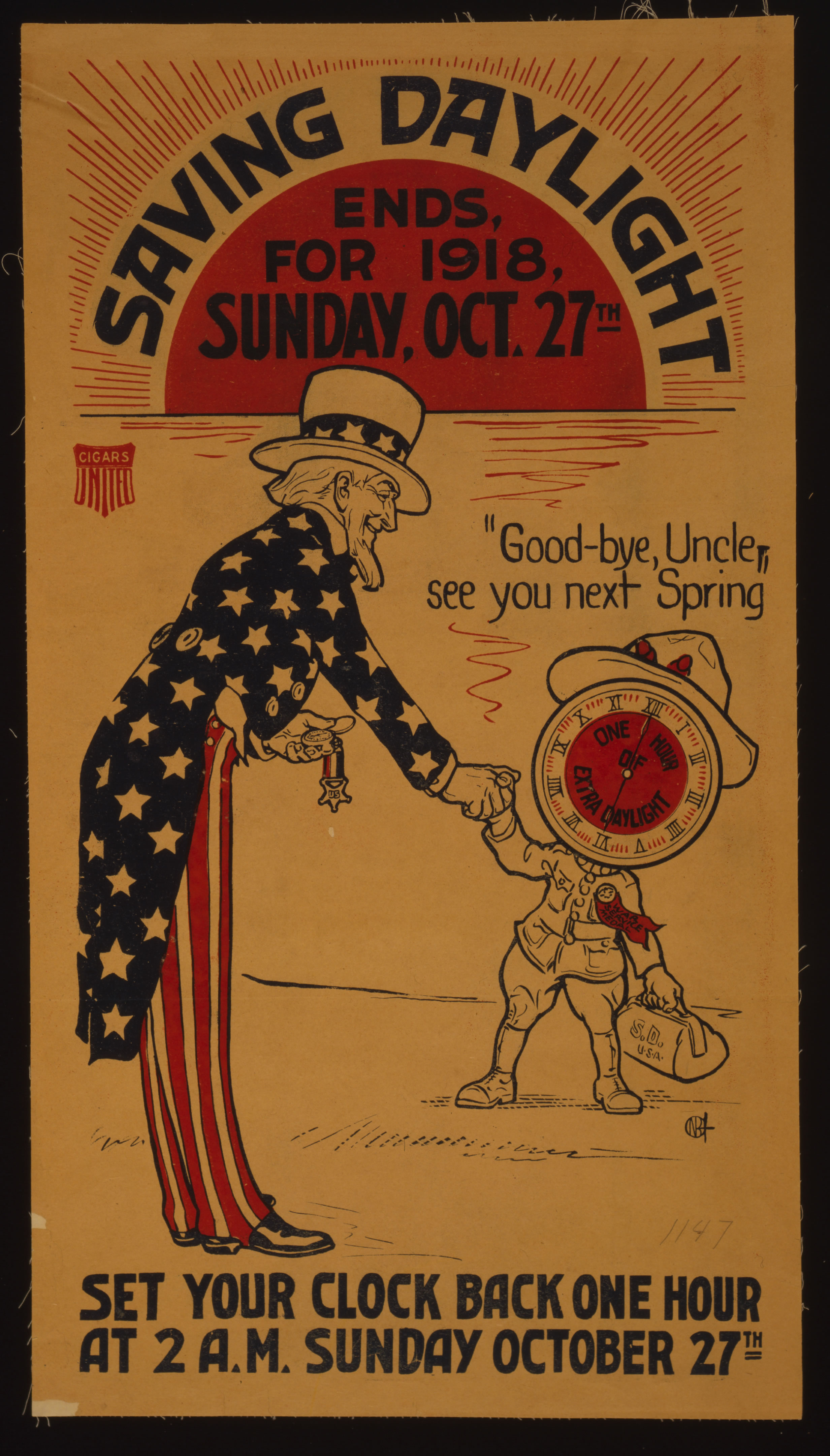
A United States Department of Transportation study done in the 1970s by the U.S. Law Enforcement Assistance Administration found that in Washington, DC violent crime was reduced by 10 to 13 percent during periods of daylight saving time. It is believed that many types of crimes are influenced by lighting conditions. People feel safer in the daylight and more light in the evening decreases the opportunity for street crimes such as mugging.
Daylight saving time continues to raise concerns and arguments. Not everyone believes it helps on the safety issue. According to two Michigan State University researchers, Christopher Barnes and David Wagner, the number of workplace accidents spike after daylight saving time changes every March. They conducted a study beginning in April 2008 that lasted for a year. They found that the March switch to daylight saving time resulted in 40 minutes less sleep for American workers. A 5.7 percent increase in workplace injuries was found resulting in nearly 68 percent more work days lost to injuries. Wagner commented, “Not only are there more injuries, but the researchers believe the injuries are more severe.” Daylight saving time injuries have delayed workers’ return by an average of 2,000 days compared to standard time injuries. “The people who got injured on other days could come back (to work) years earlier.”
It is safe to say not everyone benefits from the change. Additionally, those who must rise before dawn or are out and about in the early morning may have to operate in the dark a while longer. According to an article in TIME Magazine titled “Saving Even More Daylight,” farmers are disadvantaged with daylight saving time. The months when farmers have to rise in the darkness are greatly extended. In the wintertime, they must rise even earlier in the dark and begin their work in the coldest part of the night. In the summertime, setting the clock ahead effects the drying of dew off the grass. Not much field work can be done before ten o’clock in the morning, pushing their quitting time an hour later.
There are many pros and cons that come with daylight saving time. Nobody can say for sure what the future holds for daylight saving time. William Willett’s grand plan of shifting the clocks to save morning sunlight has become an international institution. And if Benjamin Franklin could see the movement in place today, he would be even more amazed than he was in 1784 when he was awakened to see the sunlight at 6 o’clock in the morning.
Sources:
- Aldrich, Bob. “Saving Time, Saving Energy.” California Energy Commission. 21 Apr. 2009. 2 Feb. 2010 <http://www.energy.ca.gov/daylightsaving.html>.
- Centers for Disease Control and Prevention.“Childhood Pedestrian Deaths During Halloween – United States, 1975-1996.” Morbidity and Mortality Weekly Report 46(42) 24 Oct. 1997: 987-990. 27 Jan. 2010 <http://www.cdc.gov/mmwr/preview/mmwrhtml/00049687.htm>.
- Cooper, Bruce Clement. The Classic Western American Railroad Routes. New York: Chartwell Books/Worth Press, 2010.
- “Daylight Saving Time.” Webexhibits. IDEA, 2008. 29 Jan. 2010. <http://webexhibits.org/daylightsaving>.
- Dell, Kristina. “Saving Even More Daylight.” TIME Magazine 6 Mar. 2007. 27 Jan. 2010 <http://www.time.com/time/nation/article/0,8599,1596686,00.html>.
- Downing, Michael. Spring Forward: The Annual Madness of Daylight Saving Time. New York: Nation, 2006.
- Habermehl, Kayla. “MSU study reveals daylight-saving time as workplace hazard.” The State News 2 June 2009. 2 Feb. 2010. <http://www.statenews.com/index.php/article/2009/06/msu_study_reveals_day....
- Prerau, David S. Personal Interview. 27 Jan. 2010.
- Prerau, David S. Seize the Daylight: The Curious and Contentious Story of Daylight Saving Time. New York: Thunder’s Mouth, 2005.
- Rosenberg, Matt. “Daylight Saving Time (Not Daylight “Savings” Time).” About.com. The New York Times Company, 17 Feb. 2010. 22 Feb. 2010 <http://geography.about.com/cs/daylightsavings/a/dst.htm>.
- Walter, Laura. “Workplace Injuries Rise Following Change to Daylight Savings.” EHS Today 21 Mar. 2009.
